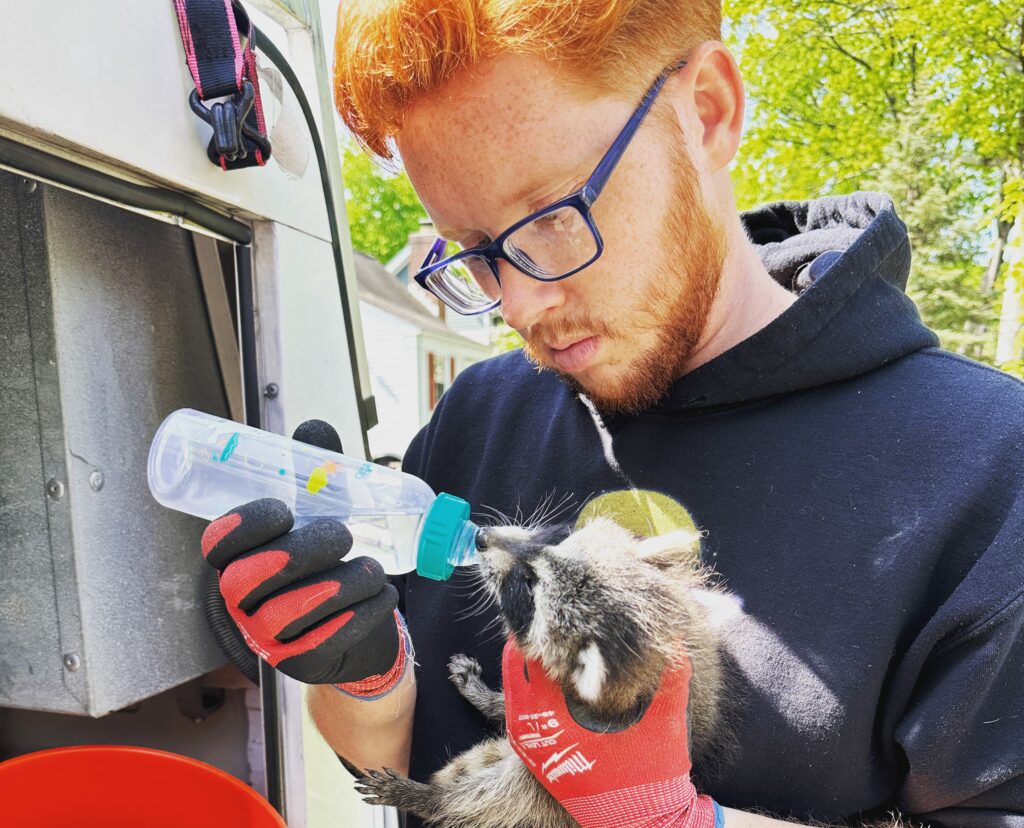If you’ve recently been hearing mysterious scratching noises in your attic after dark, you might be dealing with an unexpected visitor: flying squirrels. These small, nocturnal creatures are known for their ability to glide silently through the night skies, but inside your home, they can become a major nuisance. Understanding flying squirrels, how they behave, the signs of their presence, and the potential risks can help you protect your property and peace of mind.
Who Are Flying Squirrels?
Flying squirrels are not actually capable of powered flight like birds or bats. Instead, they have a special flap of skin called a patagium that stretches from their wrists to their ankles, allowing them to glide between trees. This unique adaptation helps them escape predators and move efficiently through wooded areas.
These creatures are nocturnal, meaning they are most active at night. They have large, dark eyes adapted to low-light conditions and a soft, furry body that helps them stay warm during cooler months. In North America, the two most common species are the northern flying squirrel and the southern flying squirrel.
Why Are Flying Squirrels in Your Attic?
Seeking Shelter and Safety
Flying squirrels prefer nesting in hollow trees or abandoned woodpecker holes in the wild. However, urban and suburban development has reduced their natural habitats, leading them to seek alternative shelter options like your attic.
Your home offers flying squirrels warmth, safety from predators, and a protected environment to raise their young. Attics are especially attractive because they are dark, quiet, and rarely disturbed during nighttime hours when flying squirrels are most active.
Easy Access Points
Flying squirrels are surprisingly agile and can squeeze through very small openings, as tiny as a quarter-inch wide. Common entry points into homes include damaged soffits, gaps around vents, roofline cracks, loose shingles, and chimneys without caps.
Once inside, they can navigate the attic space easily, nesting in insulation, old nesting material, or stored belongings.
Signs of Flying Squirrels in Your Attic
Nocturnal Scratching and Scurrying Sounds
One of the earliest and most noticeable signs of flying squirrels is hearing scratching, scurrying, or rustling noises coming from your attic or walls, especially at night. These sounds are caused by their movement, chewing, and nesting activities.
Unlike rats or mice, flying squirrels tend to make softer, gliding movements but still produce consistent noise that can disturb sleep.
Droppings and Urine Stains
Flying squirrel droppings are small, dark, and pellet-shaped. Finding these in your attic, along rafters, or near suspected entry points is a strong indicator of their presence. Urine stains may also cause discoloration or odors in insulation or wood.
Nesting Material and Damage
Flying squirrels collect materials such as shredded paper, fabric, leaves, and twigs to build nests. You might find piles of such debris in your attic. They can also cause damage by gnawing on electrical wiring, wood, and insulation, posing a fire risk.
Sightings or Glimpses
Though nocturnal and elusive, you may occasionally glimpse a flying squirrel darting near attic vents or roof edges during twilight or nighttime. Their large eyes and gliding ability make them distinguishable from other rodents.
Potential Risks of Flying Squirrels in Your Home
Structural and Electrical Damage
Flying squirrels use their sharp teeth to gnaw constantly, which helps keep their teeth from overgrowing. This behavior can damage wooden beams, rafters, insulation, and especially electrical wiring. Damaged wiring can lead to electrical shorts or even fires, making this a serious safety concern.
Health Concerns
While flying squirrels are not known to carry rabies, their droppings and urine can harbor bacteria and parasites that pose health risks. For instance, exposure to rodent droppings can cause allergic reactions or respiratory issues in sensitive individuals.
Their nests can also attract fleas, mites, and ticks, which may then spread to humans or pets. Additionally, flying squirrels can be carriers of certain viruses and diseases transmitted through bites or contact with contaminated materials.
Noise and Disturbance
The nocturnal activity of flying squirrels can cause persistent noise disturbances, including scratching and scampering sounds that interrupt sleep and reduce overall comfort in the home.
How to Prevent Flying Squirrel Infestations
Inspect and Seal Entry Points
A critical step in preventing flying squirrels is to regularly inspect your home’s exterior for gaps, cracks, or damage that could serve as entry points. Pay close attention to roof edges, soffits, vents, chimneys, and attic vents.
Sealing these areas with durable materials like steel mesh, metal flashing, or caulking prevents squirrels from gaining access.
Maintain Your Roof and Gutters
Trimming tree branches away from your roof reduces the ability of flying squirrels to jump or glide onto your home. Keeping gutters clean and ensuring proper drainage also reduces attractive nesting spots near your home.
Remove Food Sources
Avoid leaving pet food outdoors and secure garbage cans with tight lids. While flying squirrels primarily eat nuts, fruits, and seeds, reducing available food sources can make your property less appealing.
What To Do If You Suspect Flying Squirrels
If you hear scratching noises at night and notice signs of flying squirrels in your attic, it’s important to address the issue promptly. Flying squirrels reproduce quickly, and their population can grow if left unchecked.
Professional flying squirrel removal near me specialists provide humane and effective solutions. They conduct thorough inspections, identify entry points, safely remove animals, and seal access points to prevent re-entry.
Using experts experienced in wildlife removal Bergen County ensures compliance with local wildlife laws and humane treatment of animals. They also perform necessary cleanup and remediation to restore your attic environment safely.

Conclusion
Hearing scratching noises at night can be unsettling, and flying squirrels are a common cause of such disturbances in attics. Their nocturnal habits, ability to squeeze through small openings, and nesting behaviors make them frequent unwelcome guests in homes.
Recognizing the signs of flying squirrel activity and understanding the potential damage and health risks they pose can empower homeowners to take timely action. Prevention through sealing entry points and removing attractants is essential, but when an infestation occurs, professional help is the safest and most effective route.
About Kritter Catchers NJ
Kritter Catchers NJ is a trusted wildlife removal company serving Bergen County and surrounding areas in New Jersey. Our licensed team specializes in humane flying squirrel removal and comprehensive wildlife removal Bergen County NJ services. We focus on safely removing nuisance wildlife, sealing access points, and restoring homes to a clean and safe condition.


